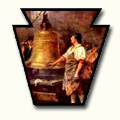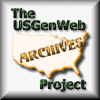| |
Page 605
MORRIS TOWNSHIP.
ing Stone Run, and Basin Run. Those that discharged their waters into the
Moshannon were Crawford Run, Weber Run, Moravian and Little Moravian Runs
(neither, however, being the stream that is correctly so named), Grass Flat Run,
Brown's Run, Big Run, Hawk Run, and Emigh Run. It will be seen that some of
these are duplicate names, corresponding with names of other streams in other
townships. The truth is, that many of these names were not applied until
recently, and then by persons not thoroughly acquainted with the county or its
numerous small rivulets, hence the fact.
This township, inclusive of Cooper, is bounded north
by the Susquehanna River and Graham township ; east by the Moshannon, which
stream forms the division line between Clearfield and Centre counties ; south by
the Moshannon and Decatur township, and west by Decatur, Boggs and Graham
townships.
In the year next succeeding that in which Morris
township was erected (1837), James Allport made an enumeration of the taxable
inhabitants, and before relating the facts of early settlement, it is well to
show who were residents there at the time of the erection. Many of these early
settlers will be found mentioned in the sketch of the township provided by one
of the respected residents of Kylertown, and will appear in this chapter further
on. The enumeration or assessment roll contained the following names : James
Allport, Robert Ardery, Henry Beams, Abraham Brown, John Brown, David Cooper,
John Coonrod, William Dillon, George R. Dillon, Joseph Denney, Samuel Davison,
David Dale, William Everhart, Martin Flegal, Valentine Flegal, David Flegal,
Samuel C. Hall, George Hoover, Thomas Hancock, Vincent Holt, Nicholas Heister,
John Hoover, William M. Hunter, John W. Irvin, Leonard Kyler, Jacob Wise,
William Shimmel, George Shimmel, sr., Philip Shimmel, Jacob F. Runk, John Ready,
Christian Roubly, John Roubly, John Beams, Jacob Beams, Jonas Bumbarger, Henry
Bumbarger, Jacob Gearhart, Valentine Gearhart, David Gearhart, Peter Gearhart,
John L. Gearhart, David Gray, Peter Gray, Jeremiah Hoover, Samuel Hoover, Evans
Hunter, Reuben Hunter, Abraham Kyler, John B. Kyler, Henry Lorain, John Merryman,
Joseph Morrison, Jacob Pierce, William Ricord, Joseph Senser, Frederick Senser,
Moses Thompson, Samuel C. Thompson, Samuel Warring. The total amount of the
assessment for the year 1837, as shown by the roll made by Mr. Allport, was
$14,318.
In the year 1861, nearly twenty-five years after the
above enrollment was made, John Rayhorn became the assessor of the township, and
as such made a list of the persons residents of the township, who were subject
to militia duty. His list is copied here, and by an examination thereof, it will
be seen that a large proportion of the names are new and not to be found in the
first list of taxables made by James Allport. It also serves to show how rapid
must have been the growth of this locality, notwithstanding the fact that but a
few years before Graham was formed, thus taking a large tract from Morris in its
formation.
77
|
|






